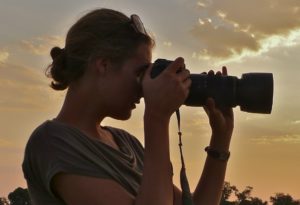With fewer than 900 mountain gorillas left in the wild today, according to the World Wide Fund for Nature, the rare opportunity to come across a family group in their natural habitat is one of the most remarkable safari experiences imaginable. Even encountering a lowland gorilla, a subspecies with a widespread population of more than 100,000, is still very special. Our clients often tell us that watching our distant cousins (we share 98.3% of their DNA) act just like us—laughing, sulking, performing human-like activities, like foraging and socializing—is always the highlight of their trip, and, sometimes, their lives!
Whether it’s in Rwanda, Uganda, or the Congo, you’ll have to venture deep into the rainforest to find these precious primates, hanging out in the comforts of their lush-green homes. Nothing worth doing is ever easy, and gorilla trekking is no exception. We assure you, it’s worth the effort, which can be minimized if you’re prepared. Follow these six tips to make the most of this once-in-a-lifetime adventure.
Encountering a gorilla in the wild will make all the trek-prep work worthwhile. ©Nicolas Fekeci
1. Wake Up Early and Stay Alert
Gorilla trekking safaris usually set off around sunrise to track these stocky, broad-chested beasts from the edge of the rainforest. Before heading out, your small group of approximately 6 to 8 people will be given a safety and gorilla-etiquette briefing that must be adhered to at all times. For example, never stare directly into a gorilla’s eyes as it may be perceived as hostile, disable flash when taking photos to avoid startling the animals, and stay 20+ feet away at all times.
2. Change Your Altitude
Mountain gorillas like to sit on top of the world, so get ready to head upward. Remember that the higher elevation (nothing worthy of altitude sickness) means you’ll have to work harder than you would if you were going for a Sunday stroll. It’s essential to be in reasonably good shape just to make the trip more enjoyable. Regular hill walks or cardio sessions at the gym a few times a week, leading up to this adventure, couldn’t hurt. Consistent exercise before the trip might boost your immune system, too. Unfortunately, you won’t be allowed to trek if you’re the slightest bit ill (i.e., common cold) as gorillas are highly susceptible to human disease.
3. Dress the Part
You’re not in Kansas anymore. Going deep in the wild will require the sturdiest, most lightweight, water-resistant boots with ankle support for trudging through mud. Even if you visit during the dry season (mid-December to early February and June to September), you’re in the rainforest, so expect damp conditions. You’ll also want lots of layers (opt for neutral shades as bright colors can attract insects) to stay warm at sunrise, keep the stinging nettles at bay, and peel off when you start working up a sweat on the hike. A pair of gloves for fending off thorny bushes are good, too, plus a walking stick to lean on when traversing slippery terrain, especially during the rainy season. A hat with a wide brim for sun protection is essential all-year-round.
A close encounter like this one will make your gorilla trekking experience one for the books. ©Bisate Lodge
4. Pack Light
Make sure you bring a waterproof daypack that can carry your supplies, such as sunglasses, binoculars, sunscreen and insect repellent containing 20% to 50% DEET, and, of course, your camera. Your lodge will provide you with a packed lunch and snacks, and you’ll need at least a liter of water. A rain poncho is also advisable as the weather can be unpredictable, even in the dry season (June to mid-September). We support hiring the services of a porter to carry your bag, as it helps support local communities who rely on tourist income. Even if you’re in superb shape, you may appreciate the help. While you may find the gorillas within an hour, it could take considerably longer, up to 7 hours. Make sure you bring cash for extra services and tips: $15 to 20 per tracker or ranger and $10-15 for a porter, plus a $5 tip.
5. Make the Most of Your Magic Hour
Once gorillas are located, you are limited to one hour (the clock starts immediately) of observation and photography. As mentioned in the safety briefing, you must keep at least 23 feet (two cars lengths) away from the animals. Apes, in general, have boundary issues, so if they come toward you, it’s on you to back up. To the best of our knowledge, no tourist has ever been seriously hurt by a habituated gorilla, but there is always a first time as an adult gorilla is much stronger than a person and will act in accordance with its own social codes. Therefore, it is vital that you listen to your guide at all times regarding protocol in the presence of gorillas.
6. Put Down Your Camera
After the first 10 minutes of photos, consider lowering your lens and taking in the moment. Take a deep breath and try to enjoy this experience without a screen between you and your long-lost cousins. Be present and let the awe really set in. This is when the most unforgettable memories are captured.
PLAN YOUR VISIT
Call or email us to begin planning your gorilla experience today!
Plan your Trip
Ready to start planning your own incredible adventure? We make the process stress-free and enjoyable.


